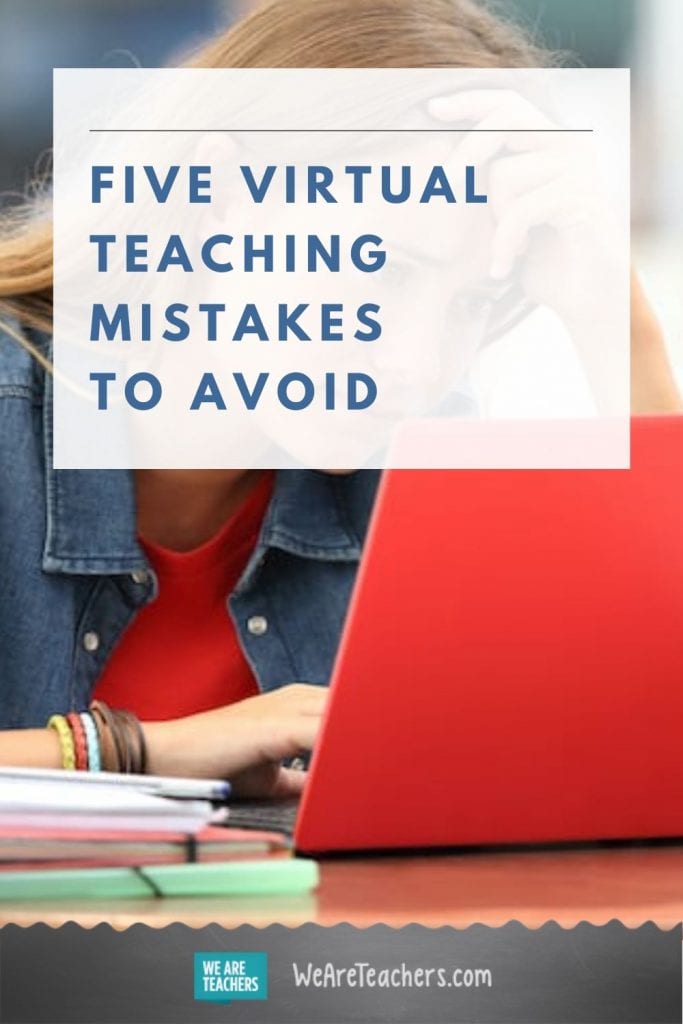Teachers across the nation had a hot second to learn virtual teaching. Literally 48 hours in Ohio. The mind shift from daily student interaction to 100% web and video-based learning sent students and teachers’ minds spinning for a few weeks. They also had to deal with the emotional turmoil of living in a pandemic. Now, five weeks in, some common best practices seem to be emerging. Of course, there are also some common virtual teaching mistakes too! While nobody is to blame for these, as there was absolutely no rule book or precedent for how to navigate this unique time, it’s still worth asking yourself if you’re making these mistakes and how to correct them.
Mistake# 1: You avoid face time with your students
Not to be confused with the Facetime app on the phone, this is the literal time spent where the students see your face. They miss you, you miss them, and they learn best directly from you, not an uploaded worksheet. Consider what’s stopping you. Do you think you take bad videos, freeze up or don’t know what to say? Is working from home, while homeschooling your own kids, taking your messy bun to new levels of scary, and you don’t want to be seen?
Your students literally don’t care how you look, because they are also in hoodies surviving shelter in place. They don’t even care what you say, they just miss the normalcy of hearing your voice and they want to pull nuggets of brilliance out of your lessons and lectures that they can apply in their own lives. Let’s be that for them, because technology allows us to and they need it.
[contextly_auto_sidebar]
Mistake #2: You expect daily meetings, high attendance rates, and full engagement
On the opposite extreme of avoiding face time are the teachers that expect students to attend full hour lectures every day while you teach over video the entire time. This strategy was tough for them in the classroom, and will be even tougher from home, where unresolved additional barriers to learning abound: siblings needing care from older students, Wi-Fi issues, and parents trying to navigate working from home without childcare.
If you feel disappointed by lack of engagement during virtual learning, check your expectations against those of your colleagues and other trusted counsel, such as a counselor or admin. If you are requiring more work than you did during “real” school, because kids are “at home doing nothing,” it may be time to reevaluate your students’ reasons for not showing up to a daily lecture.
Mistake #3: You require a journal, but so does science. And social studies. And PE.
Do you write in a journal? What if, as soon as you finished an entry, you had to write almost the exact same journal entry, but slightly different, in another notebook? Well-intentioned teachers are requiring students to journal about their experience during the COVID-19 crisis. It’s a great idea really, as they may never encounter anything like this again in their lifetime … we hope. But how many other teachers are also requiring a journal entry? How can those be coordinated or streamlined?
School leaders need to take a second to understand how many journals are being required of students and make allowances for turning in similar entries across classes, where necessary. Another alternative is to ensure your prompts are unique.
Mistake #4: You anticipate that kids don’t want to do anything
I recently read a post from one of my students in which they joked they are pacing themselves so as to not do their schoolwork too quickly, because then what will they have to do each Wednesday through Friday? Students want to engage in learning, in spite of how lethargic they may seem on your video chats. Assuming they want to completely disengage is as bad as over-assigning work. Instead, create a well-balanced schedule to allow them to have projects to work on while not feeling overwhelmed.
Mistake #5: You implement a one-path-fits-all approach
If some students fail to show up your live lessons, how are they accessing learning? Are you recording your sessions to post later, in case they had Wi-Fi problems or had to care for their sister at that time? Is there a reading they can access in place of the content you created? Some teachers are forgetting the differentiation strategies they implement in the classroom. This is definitely one of the key virtual learning mistakes to fix. Consider allowing credit for learning that takes place as one option on a list of possible ways to learn, rather than allowing one choice only. It’s a great time to use out of the box assignment methods, such as portfolios, videos of the student talking through their learning and challenges, and other non-traditional ideas.
What virtual teaching mistakes have you made and how did you fix them? Share in our WeAreTeachers HELPLINE group on Facebook .
Plus, the Dos and Don’ts of Teaching Online.


